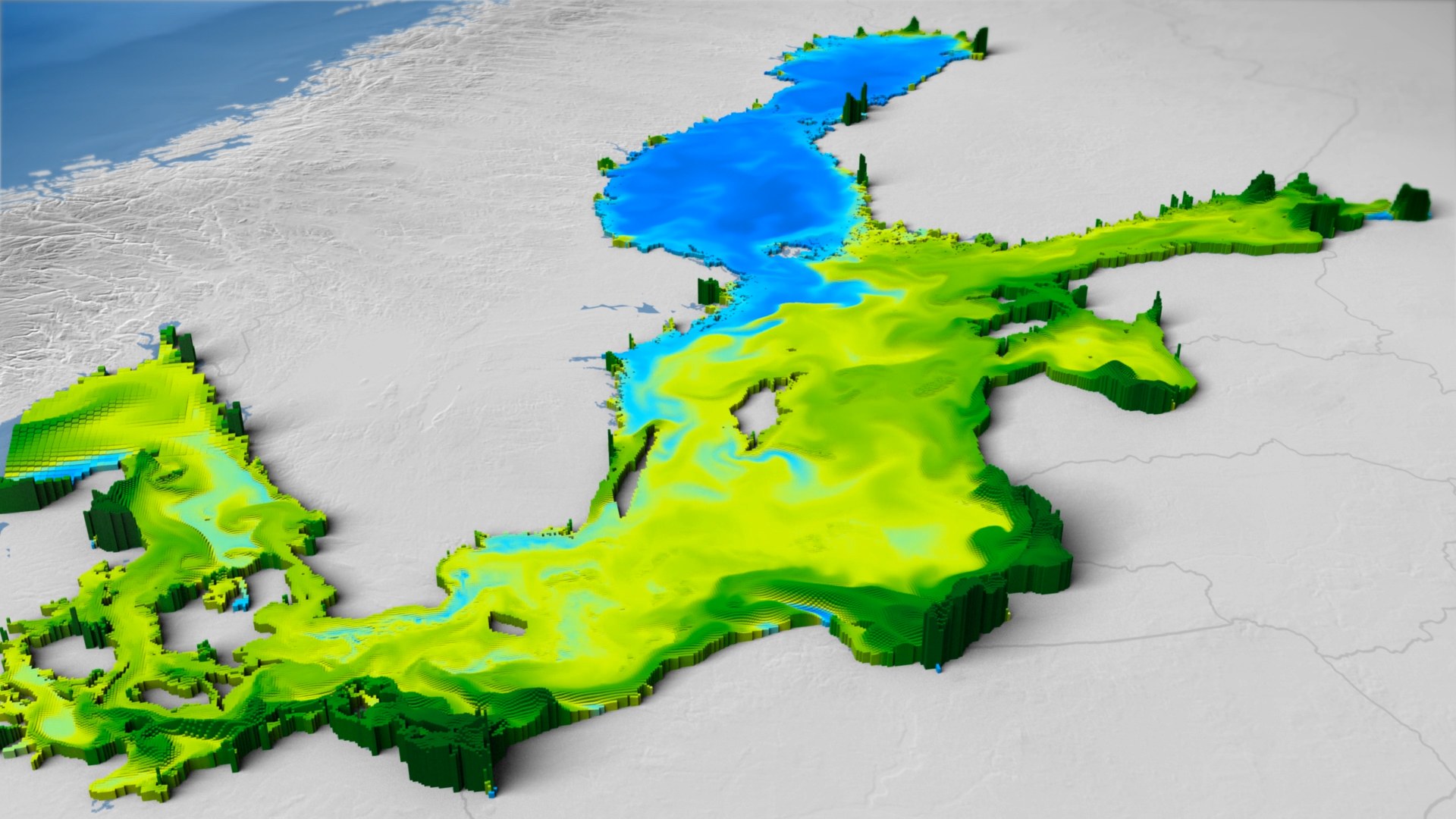Monitoring the smallest environmental changes
Monitoring the smallest environmental changes
Thanks to the depth of detail of the EnMAP instrument, the smallest changes in our environment can be detected early on, thus improving our ability to protect the climate and the environment. In this way, EnMAP will help to make global land use more sustainable, highlight the consequences of climate change and counteract the progressive destruction of the environment. One example is phytoplankton. Like plants on land, algae, flagellates and cyanobacteria use the natural pigment chlorophyll for photosynthesis. Phytoplankton form the basis of the food chain in the oceans and play an important role in the carbon cycle. EnMAP will provide data similar to that in the simulation (image) to create global maps of this important, rapidly changing ocean property. This is because algae convert about the same amount of carbon dioxide into oxygen as trees. They are thus the second ‘green lung’ of our planet alongside the tropical rainforest. Compared to the jungle giants, however, the green water dwellers have a decisive advantage: they grow much faster.

